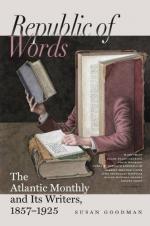It is not merely the arithmetic of his authorities that Mr. Wilson undertakes to rectify. When they describe a pitched battle, he asserts that it was a mere skirmish. When they speak of a large town, he tells us it was a rude hamlet. When they portray the magnificence of the city of Mexico, he says that they are “painting wild figments”—whatever that may mean,—and that Montezuma’s capital was a mere collection of huts. Cortes tells us, that, in his retreat, he lost a great portion of his treasure. Mr. Wilson writes, “The Conquistador was too good a soldier to hazard his gold; it was therefore, in the advance, and came safely off.” Cortes states, that, in a certain battle, he retired from the front in order to make a new disposition of his rear. Mr. Wilson replies, that Cortes did not go to the rear, because, though his presence was greatly needed there, the press must have been too great to allow of his reaching it. The presents which Cortes, while at Vera Cruz, received from Montezuma, he transmitted to the Emperor Charles the Fifth, sending, at the same time, an inventory of the articles, among which was “a large wheel of gold, with figures of strange animals on it, and worked with tufts of leaves,—weighing three thousand eight hundred ounces.” The original inventory is still in existence. We have the evidence of persons who were then at the imperial court of the reception of these presents, of the sensation which they produced, and of the ideas which they suggested in regard to the wealth and civilization of the New World; and we have minute descriptions of the different articles, including the wheel of gold, from persons who saw them at Seville and at Valladolid. Mr. Wilson,—without making the least allusion to this testimony, which we cannot help regarding as of the strongest possible kind, intimates that the presents were of very little value,—represents the workmanship, which excited the admiration of the best European artificers, as a mere specimen of “savage ingenuity,”—and as for the wheel of gold, tells us that it “never existed but in the fertile fancy of Cortez.”




